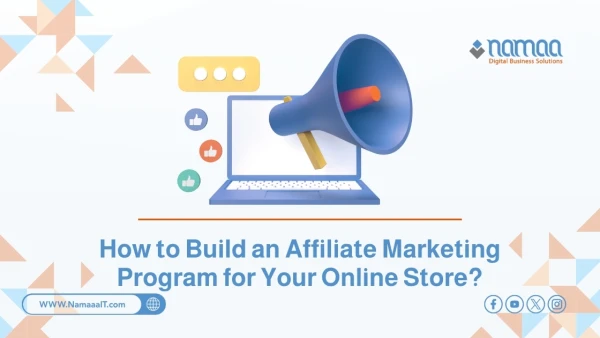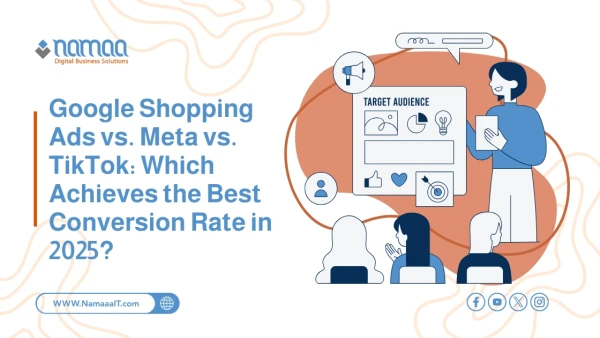In the fast-changing e-commerce market, relying solely on traditional marketing is no longer a viable option. Attracting and retaining customers now requires intelligent, personalized, and timely communication. This is where email automation systems shine as one of the most effective tools for building strong customer relationships and boosting sales without ongoing manual effort. These systems enable brands to send tailored messages based on user behavior and interests, turning every interaction into an opportunity to build loyalty and drive revenue. In this article, we explore the top email automation systems that should be a core part of every successful online store's strategy.
What Are Email Automation Systems?
Email automation systems are digital platforms or tools used to send emails automatically to customers or subscribers based on a set of triggers and behaviors. These systems rely on technology that allows messages to be scheduled, personalized, and precisely targeted to the right audience at the right time, without the need for manual intervention each time.
For example, when a new user registers on your website, the automation system can automatically send a welcome email containing basic information or a special offer, creating an immediate connection that makes the customer feel valued.
These systems use logical rules typically based on criteria such as email opens, link clicks, completed purchases, or even ignoring certain offers. You can build complex email sequences that change based on the recipient’s actions. For instance, if a customer opens an email but doesn’t complete a purchase, a follow-up message with a special offer can be sent within 24 hours.
What sets these systems apart is the ability to personalize every message based on the recipient's name, previous behavior, and preferences—making communication more human and effective. Automation isn’t just for promotions—it can also include reminders, notifications, surveys, and even greetings for special occasions.
In simple terms, email automation systems transform email marketing from a repetitive, time-consuming task into a powerful engine for relationship-building and growth.
read more: Your Online Store Speed: The Hidden Factor That Can Double or Destroy Your Sales
Why Do E-commerce Stores Rely on Automation?
E-commerce stores depend on email automation systems because they save time, increase efficiency, and enhance customer experience—all without needing a large team or constant manual effort. In a fast-paced marketing environment that demands instant responses and personalized messaging, automation becomes an indispensable tool for any brand that wants to remain competitive:
- Scalable personalization: Instead of sending generic bulk emails, automation enables sending tailored messages to each customer based on their behavior—like pages visited, items added to the cart, or past purchases. This improves open and engagement rates, leading to higher conversion.
- Error reduction and consistency: Automation greatly reduces human errors and ensures message consistency. No more forgotten reminders or follow-ups—the system handles everything automatically. It also improves customer service with accurate notifications about order status, purchase confirmations, and post-sale thank-you messages, reinforcing trust and credibility.
- Data-driven insights: Automation provides continuous, detailed data on campaign performance, revealing which messages work best. These insights help marketing teams make smarter, data-based decisions instead of relying on guesswork.
Ultimately, e-commerce stores that don’t adopt automation miss out on a valuable opportunity to improve customer experience, boost sales, and optimize resources.
Manual vs. Smart Automation in Email Marketing
There’s a fundamental difference between manual and smart email marketing automation, each reflecting a different level of efficiency and impact:
- Manual automation simply involves scheduling emails in advance—marketers create a message, set a send time, and manually choose the target group. While this saves time compared to instant sending, it doesn't respond dynamically to user behavior or real-time data.
- Smart automation, on the other hand, relies on AI or dynamic databases that respond to what users do on your website or within emails. For example, if a customer clicks on a special offer but doesn’t complete the purchase, the system can automatically send a reminder or a new offer to encourage them to return. Smart automation considers timing, interests, behavior, and even past engagement to deliver highly relevant and effective messages.
- Manual automation is like randomly handing out flyers. Smart automation is like having a personal conversation that evolves based on the other person's reactions. Intelligence here isn’t just about timing but also about content, tone, and even delivery channels (email, push notifications, SMS...).
The results also differ: smart automation usually achieves much higher open, engagement, and conversion rates than manual methods—simply because it speaks to the customer's needs at the right time. So, for truly effective marketing, transitioning from manual to smart automation is essential.
How Does Automation Increase Sales?
Automation doesn’t just boost sales—it creates a more efficient and continuous shopping experience. When implemented correctly, email automation systems turn every message into an opportunity to convince customers to buy or return to your store. The key is that these systems work silently behind the scenes, targeting customers based on behavior and handling details that would be hard to track manually.
Some ways automation helps increase sales include:
- Cart abandonment recovery: Over 60% of shoppers add products to their cart without completing the purchase. But with an automatic reminder—possibly with a small discount—many return to finalize the order. This alone can significantly increase revenue.
- Post-purchase emails: Often overlooked, these are gold mines. Automation can suggest complementary or similar products to those the customer just bought, encouraging repeat purchases. Add in occasion-based emails (like birthdays or seasonal offers), and customers feel special and more inclined to return.
- Timed promotional emails: When sent at just the right time and in the right format, promotional messages can significantly boost click and purchase rates. Automation ensures these offers are delivered based on accurate data—not guesswork.
Integration with E-commerce Platforms
Integrating email automation systems with e-commerce platforms isn’t a bonus—it’s a strategic necessity. This integration allows brands to create seamless and unified customer experiences. The automation system connects directly with the online store platform—like Shopify, PolarisMAX, Magento, BigCommerce, and others—to track customer behavior, analyze data, and engage in real time.
Once connected properly, the system can gather accurate data such as: page visits, products viewed, number of purchases, total order value, cart abandonment instances, and responses to previous emails. This data powers more targeted and effective automation campaigns. For example, if a customer frequently visits certain product pages but doesn’t buy, a tailored offer or reminder can be sent automatically.
Integration also simplifies the marketer’s job—eliminating the need to manually export/import customer data, reducing errors, and saving time. Even better, the system can automatically detect customer buying patterns and send emails based on their lifecycle, like re-engagement messages, welcome emails, or anniversary offers.
How to Choose the Right System for Your Brand
Choosing the right email automation system for your brand is a critical decision that affects your entire marketing strategy. With dozens of tools on the market—each offering different features, levels of customization, and integration options—you need to evaluate your needs carefully:
- Platform compatibility: Ensure the system integrates seamlessly with your e-commerce platform. Without smooth data flow, automation won’t be effective.
- Customer behavior customization: Look for systems that allow campaign creation based on actions like product page visits, abandoned carts, or purchase frequency.
- Ease of use: Some platforms offer powerful tools but have complex interfaces. Choose one with a simple interface, drag-and-drop features, and pre-built templates to speed up campaign creation.
- Analytics and reporting: A good system must provide detailed reports on open rates, clicks, conversions, and engagement sources—so you can optimize continuously.
- Scalability: Can the system grow with your business? Can it handle increasing subscriber numbers and data volume? Does it offer flexible pricing plans? These factors help avoid limitations down the line.
- Test before you commit: Most tools offer free trials. Use them to test real-world functionality. The best system isn’t necessarily the most expensive or popular—it’s the one that meets your goals and gives you full control over the customer experience.
FAQs
- Can email automation be used for after-sales service?
Yes. You can send automated messages with usage instructions, product review requests, or complementary product suggestions—enhancing customer satisfaction and encouraging repeat purchases. - Does email automation increase unsubscribe rates?
If messages aren't personalized or valuable, users will unsubscribe. The solution is to tailor emails to each customer’s behavior and interests to reduce opt-outs. - Can automation be integrated with paid ads?
Yes. Some systems allow you to track email engagement and re-target users with ads on platforms like Facebook or Google, creating a multi-channel marketing experience. - Does automation affect inbox deliverability?
If too many unsolicited messages are sent or unreliable sender addresses are used, emails may end up in spam folders. Stick to email deliverability best practices. - How often should automation campaigns be updated?
It's recommended to review and update campaigns every 3 to 6 months to stay aligned with seasonal trends and customer behavior changes, ensuring ongoing effectiveness.
Summary
✅ Over 75% of shoppers expect to receive personalized emails from brands—automation systems fulfill this efficiently.
✅ Automated cart recovery emails can reclaim 10–15% of lost sales.
✅ Businesses using automation see a 14.5% increase in sales productivity and a 12.2% reduction in marketing costs, according to industry benchmarks.
✅ Smart automation boosts open rates by up to 70% compared to traditional bulk emails.
✅ When integrated with e-commerce platforms, automation systems can increase conversion rates by 20–30% thanks to behavior-based messages.




.webp)
.webp)


